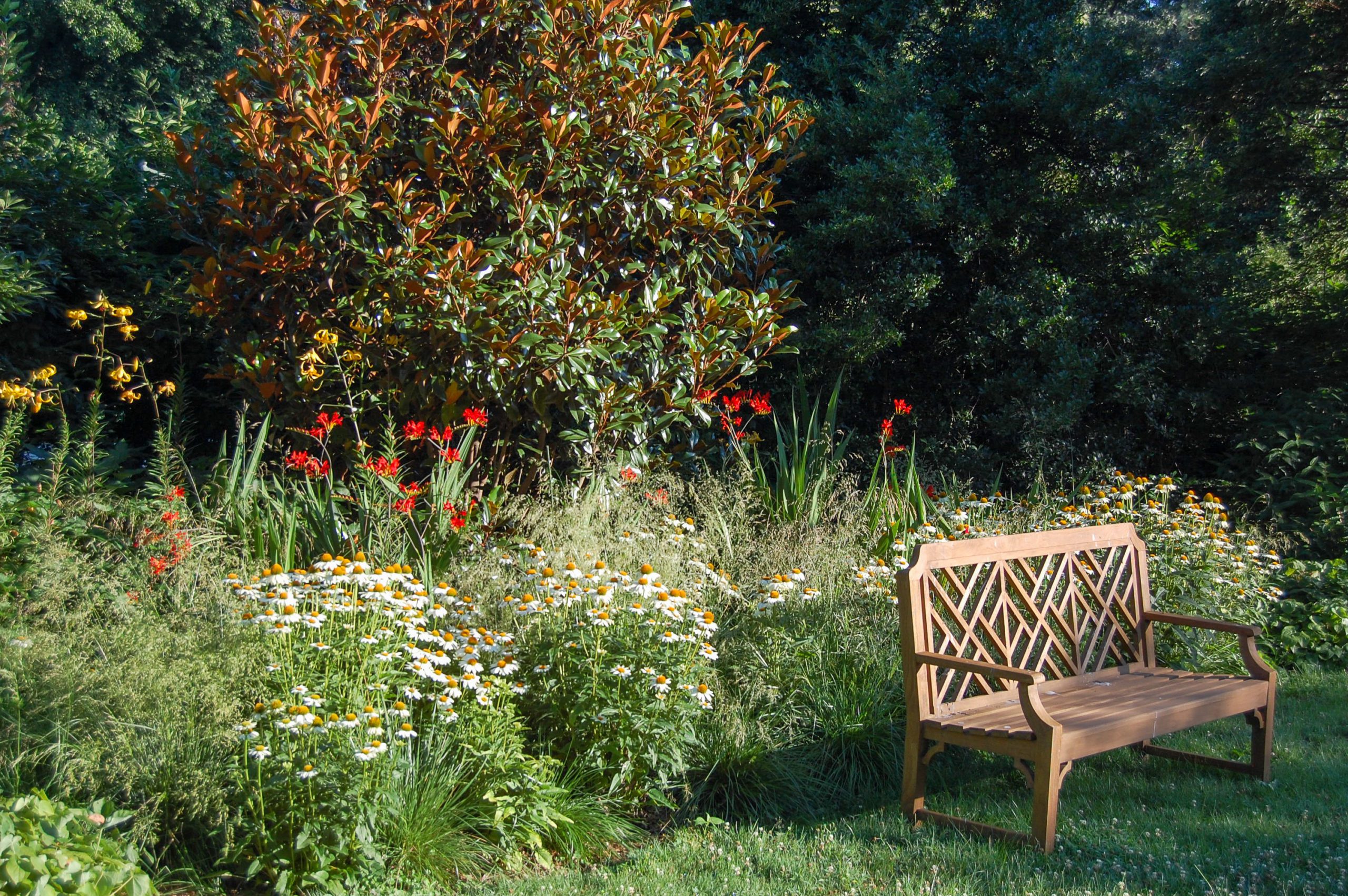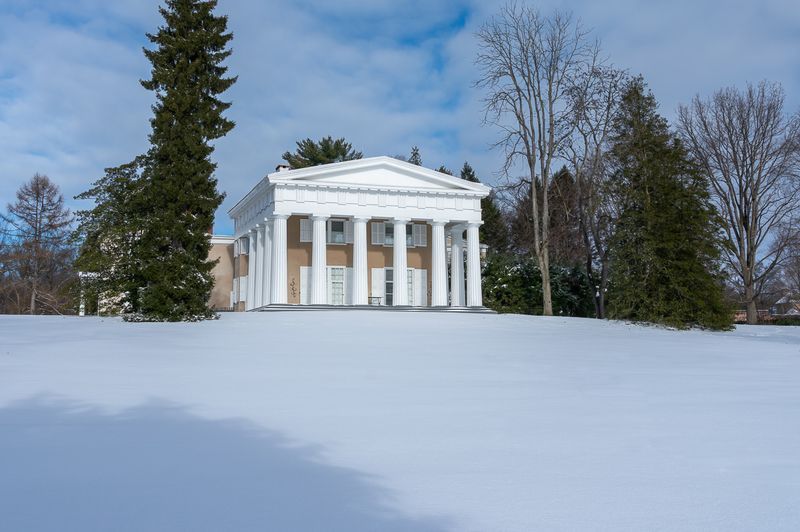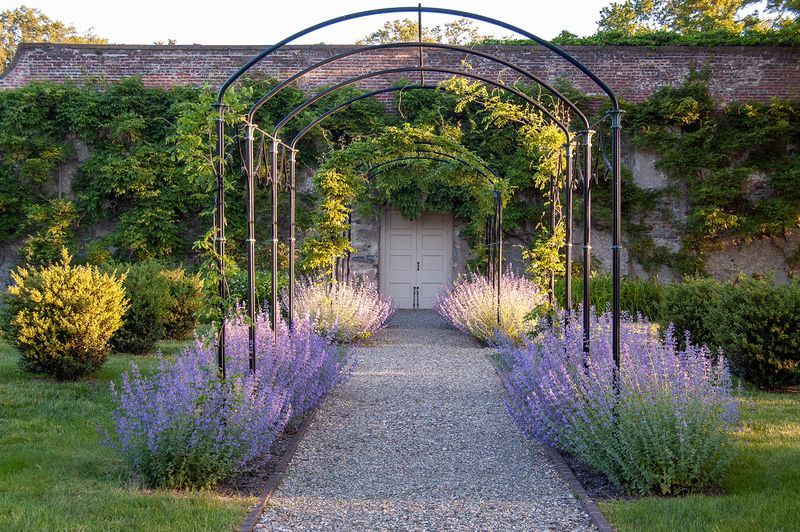July 19, 2023
Andalusia’s Darkest Day – Summer 1923
“Andalusia’s darkest day,” reads the entry in Letitia Glenn Biddle’s garden journal for July 11, 1923. Written in her distinctive scrawl, squeezed between two other lines, as if added at a later date, for Letitia it most certainly was the darkest. Her husband, Charles Biddle, passed away that day in Pennsylvania Hospital. He had entered the hospital for what was described as a minor surgery for a gastric ulcer and gall stones, from which he had suffered for a few years. The death certificate reveals the sad news that he developed post operation pneumonia which resulted in his unexpected death.

Charles Biddle, 1857-1923
Charles Biddle was the first son born to Charles John Biddle (1819-1873) and Emma Mather Biddle (1830-1918) on September 27, 1857. He joined an older sister, Jane Emma, born in 1853, and the family would eventually grow to include nine children; two died in infancy. Charles John Biddle was a son of Jane and Nicholas Biddle, President of the Second US Bank. He served with distinction during the Mexican-American War and in the Civil War with the 42nd Pennsylvania Volunteers, also known as the “Bucktails.” He resigned from the regiment to become a member of Congress for the Democratic Party and, at his untimely death in 1873, was a proprietor and editor-in-chief of the newspaper The Philadelphia Age.

Charles John Biddle and Charles Biddle, wearing his father’s Bucktails hat, c. 1861.
Charles Biddle graduated from Central High School in Philadelphia and, following a time-honored family occupation, became a lawyer, studying in the law office of a distant cousin, George W. Biddle. Like others in his family, he was involved in a variety of cultural and civic organizations. He assumed the Presidency of the Athenaeum Library and joined his uncle Judge Craig Biddle, aunt Adele Biddle, and sisters in the Society for the Prevention of Cruelty to Animals.
Around 1883, he met Letitia Glenn of Baltimore at a party given for her in Philadelphia by her mother’s family, the Smiths. Her cousin was treasurer of the Philadelphia Contributorship, and Charles served as general counsel for the firm under the banner of his law practice Biddle, Paul, Dawson and Yocum. Biddle also provided legal counsel for Philadelphia Rapid Transit and Pennsylvania Savings Fund Society.
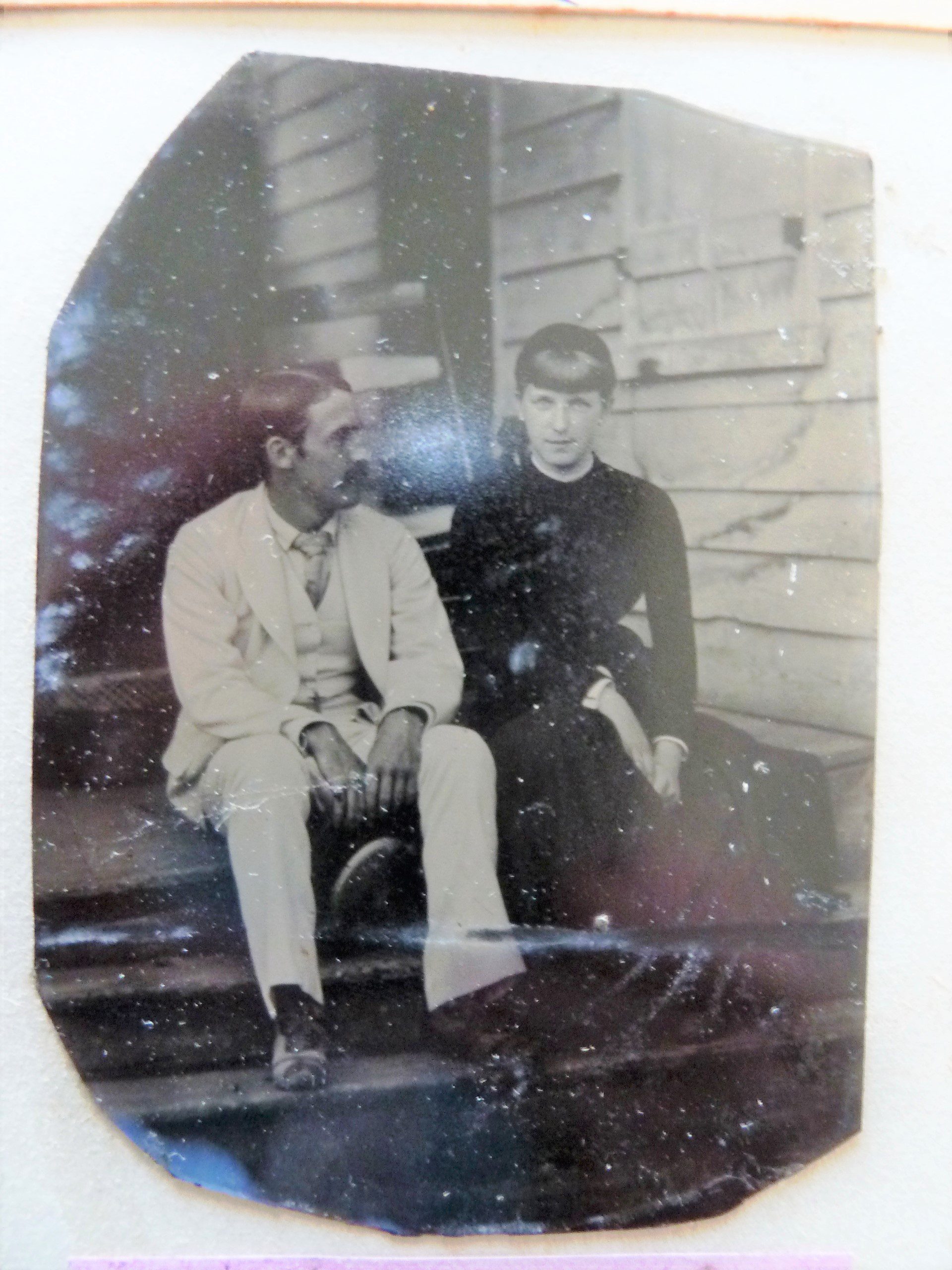
Charles Biddle and Letitia Glenn, Berkeley Springs, West Virginia, c. 1885.
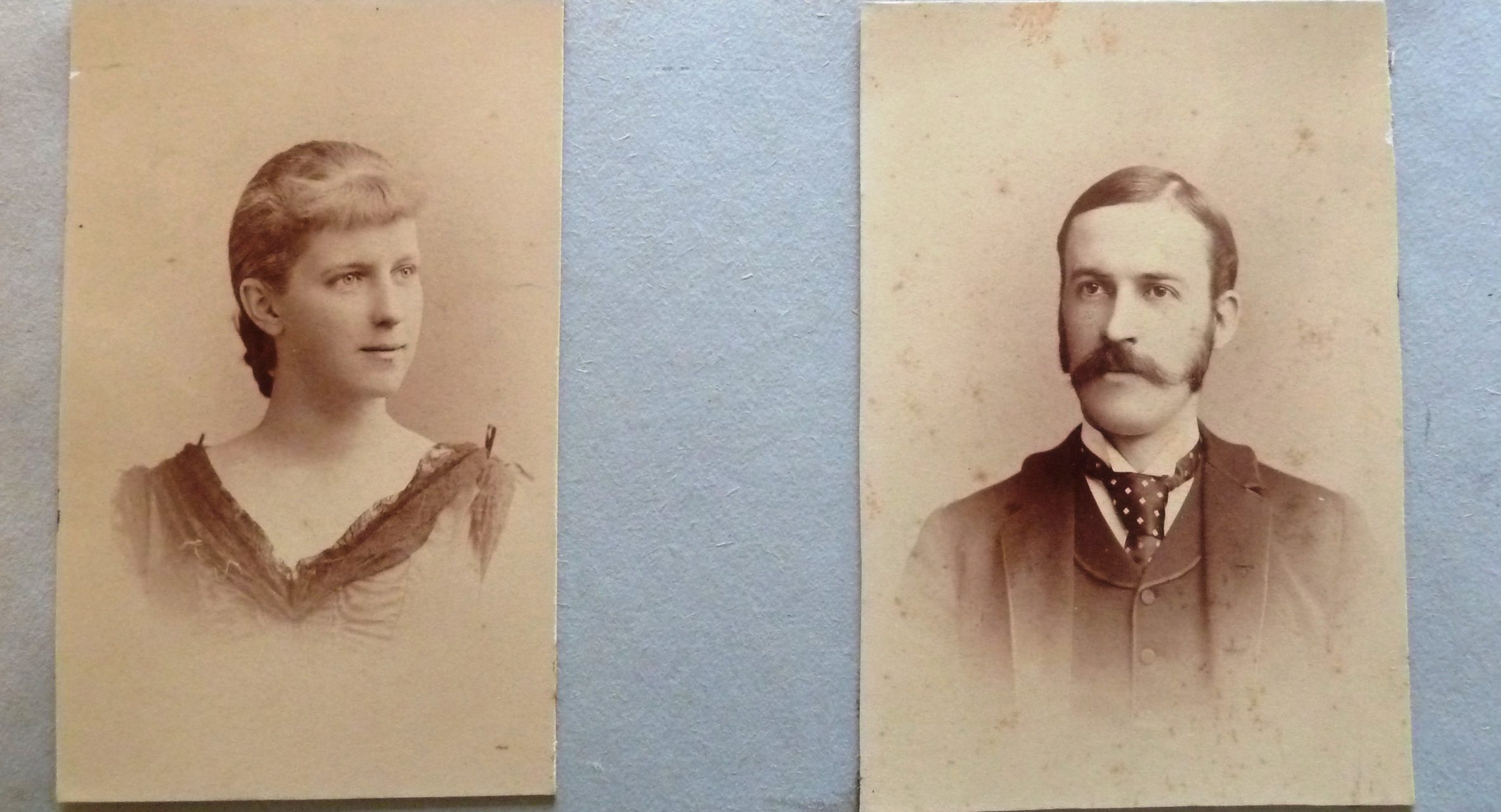
Letitia and Charles, c. 1887.
Charles and Letitia married in Baltimore in April 1888. Their only child, Charles John, was born two years later (he would go by simply Charles J. throughout his life). Letitia brought to the partnership a love of gardening, recognizing the dilapidated gardens of Andalusia as a challenge for her skills and interest. The gardens eventually became impressive as she added roses and numerous other flowers. The Garden Club of Philadelphia’s first meeting was at Andalusia in 1904, and the by-laws for the Garden Club of America were written in the Billiard Room in 1913. Later, the grounds were often open to close neighbors as well as the surrounding Andalusia village community to celebrate July 4th with cookies and lemonade.

Charles & Letitia caring for a wounded bird. Lion, one of the family dogs, shows great interest.
During long summers Charles Biddle and other family members enjoyed many outdoor activities, including lawn tennis, swimming in the river, and boating on the Delaware River and local creeks. Andalusia archives reveal that canoeing was Charles Biddle’s favorite sport, and he particularly enjoyed the Rancocas Creek with family and friends. To reach the upper regions of the creek, the trip necessitated an overnight stay with the canoeing party routinely staying at the Inn at Pemberton, New Jersey. In 1900, Charles wrote a letter to the Mount Holly Herald newspaper on the importance of keeping the creek unspoiled, but the archives notes that unfortunately, it was without success.
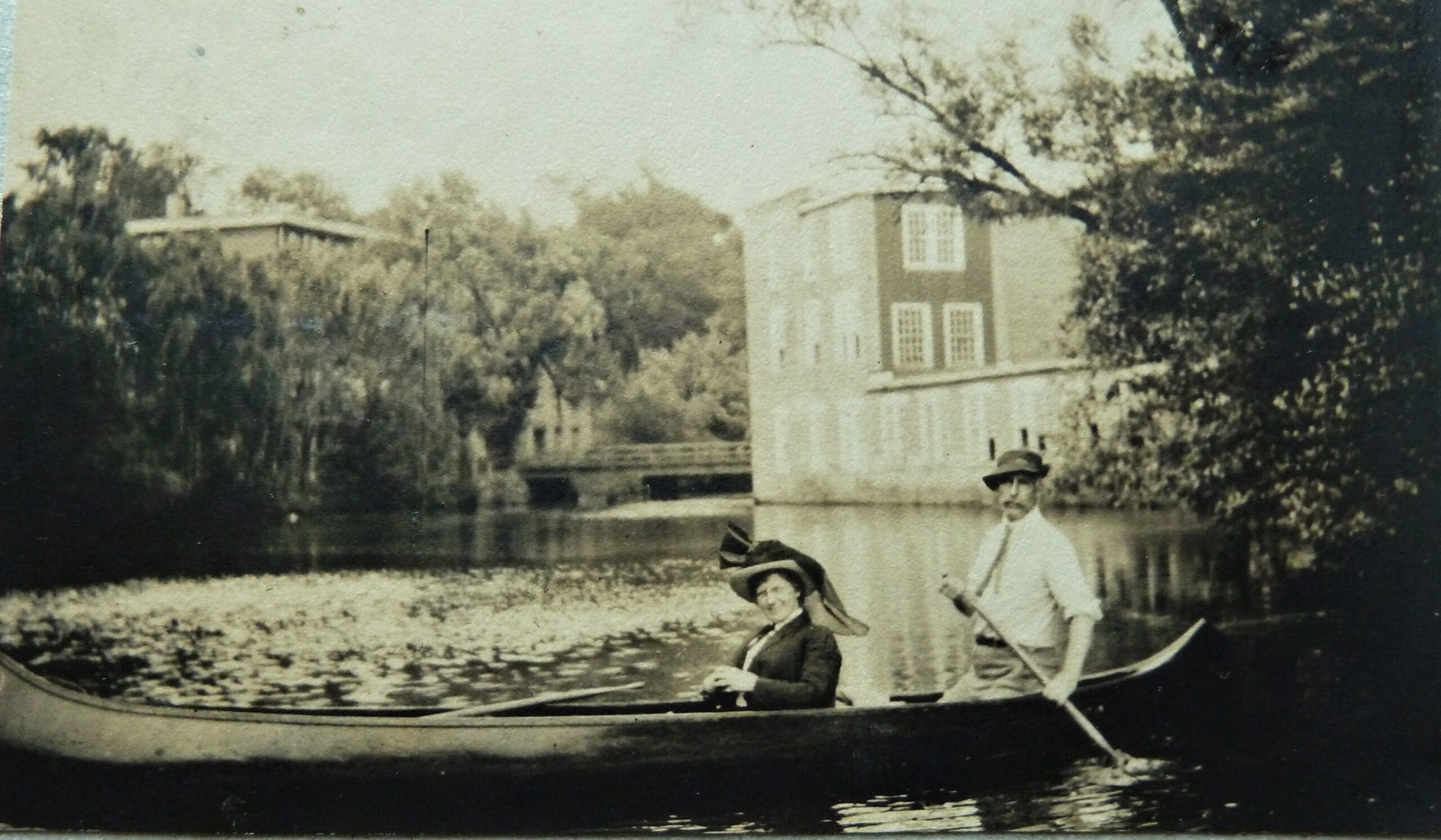
Letitia and Charles on the Rancocas Creek, New Jersey, 1903.
On weekends, Charles often engaged in outdoor chores to help take care of the property and managed the estate after the death of his uncle Judge Craig Biddle in 1910. Charles and Craig Biddle’s relationship was an extremely close one, as demonstrated by the Judge’s will; Charles was bequeathed the Judge’s share in the Andalusia property. Eventually, after the death of the last remaining child of Jane and Nicholas Biddle in 1915, Charles purchased the shares of his siblings and cousins so that he and Letitia became the sole owners of Andalusia. Prior to this time, only Craig Biddle and his sisters, Adele, Jane, and Meta, with her husband and children, summered in the Big House, while other family members stayed in the Cottage.
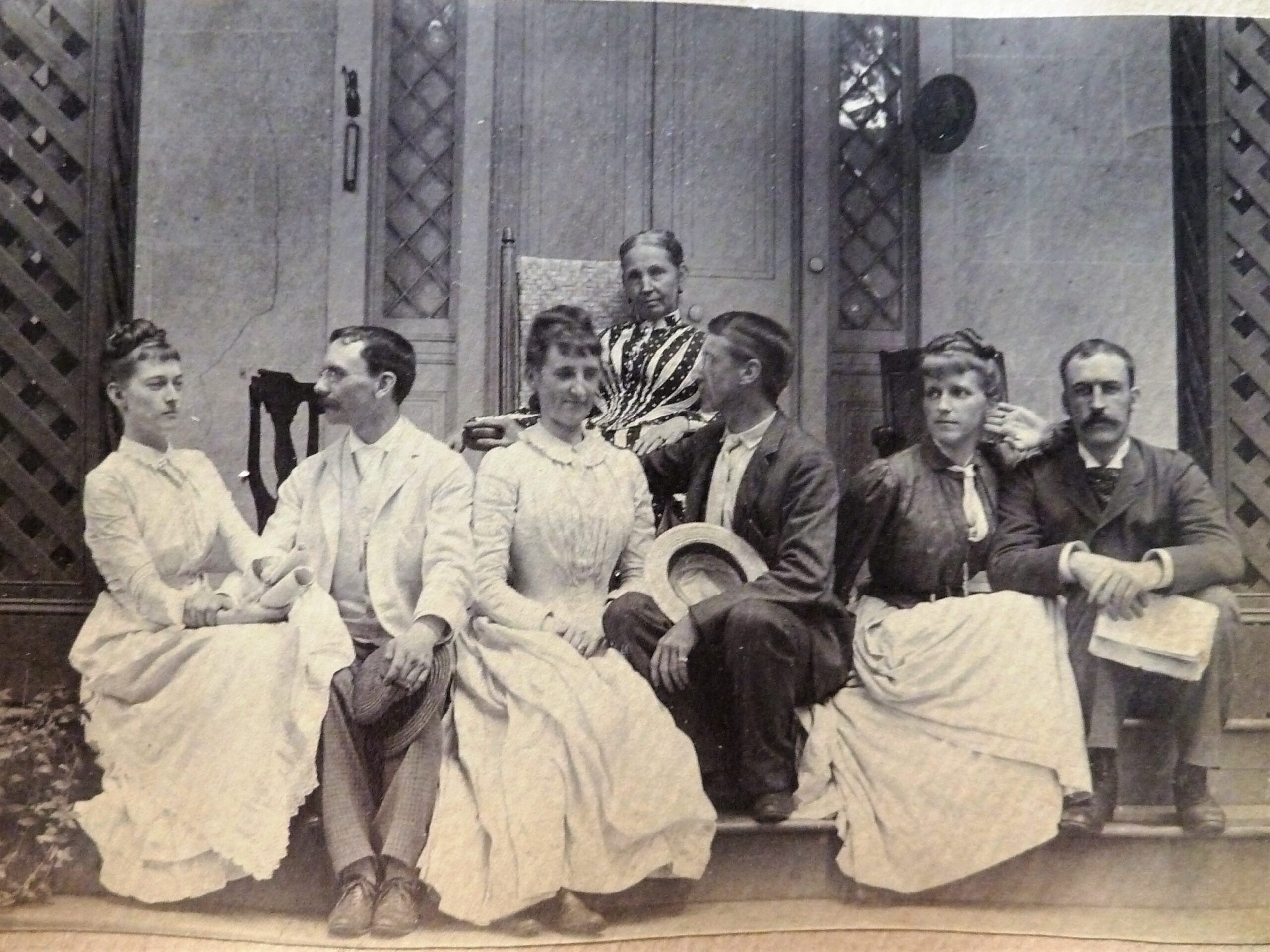
Emma Biddle (back row) with Letitia and Charles (right) and other children and their spouses on the Cottage porch, c. 1890.
Charles, Letitia, and their son, Charles J. (1890-1972) moved to the Big House in 1915. The Biddles modernized it with the addition of electricity in 1917 and plumbing a year or two after. Shortly after moving, they were surprised in searching through the house that the cupboards contained barrels and boxes, and dressing table drawers all filled with papers such as letters, newspapers, and documents. Charles Biddle’s first thought was to dispose of the papers by burning, but upon looking them over one evening, he realized these were important historical documents. In 1916, he and his cousin Edward Biddle, sent them to the Library of Congress to be sorted and to store whatever was of national interest, especially related to the Second Bank of the United States and Andrew Jackson. The remaining family papers were bound and returned to Andalusia where they have been cataloged along with other historical documents more recently discovered. These include letters from notables such as Aaron Burr, James Monroe, and General Lafayette and sixteen volumes of papers of Commodore James Biddle.

Andalusia Big House, viewed from the north, c. 1900.

Big House Library, 1915.
During the early stages of World War I, Charles wrote letters to the newspapers addressing the brutalities taking place, such as the execution by the Germans of British nurse Edith Cavell and six Belgians. He believed that the United States should be involved. He supported his son’s decision to join the war effort by volunteering in the French Air Service before the United States entered the war. Charles J. later sent a poster home from Paris featuring Edith Cavell. Both Charles and Letitia worked with civic and government organizations to aid the war. Charles was appointed by President Wilson as a Director of Enforcement Division of the Hoover US Food Administration in several states to assure supply, conservation, and distribution of food. In addition, Charles promoted the sale of war bonds while Letitia worked with the Red Cross and spoke with groups to encourage citizens to grow vegetable gardens.
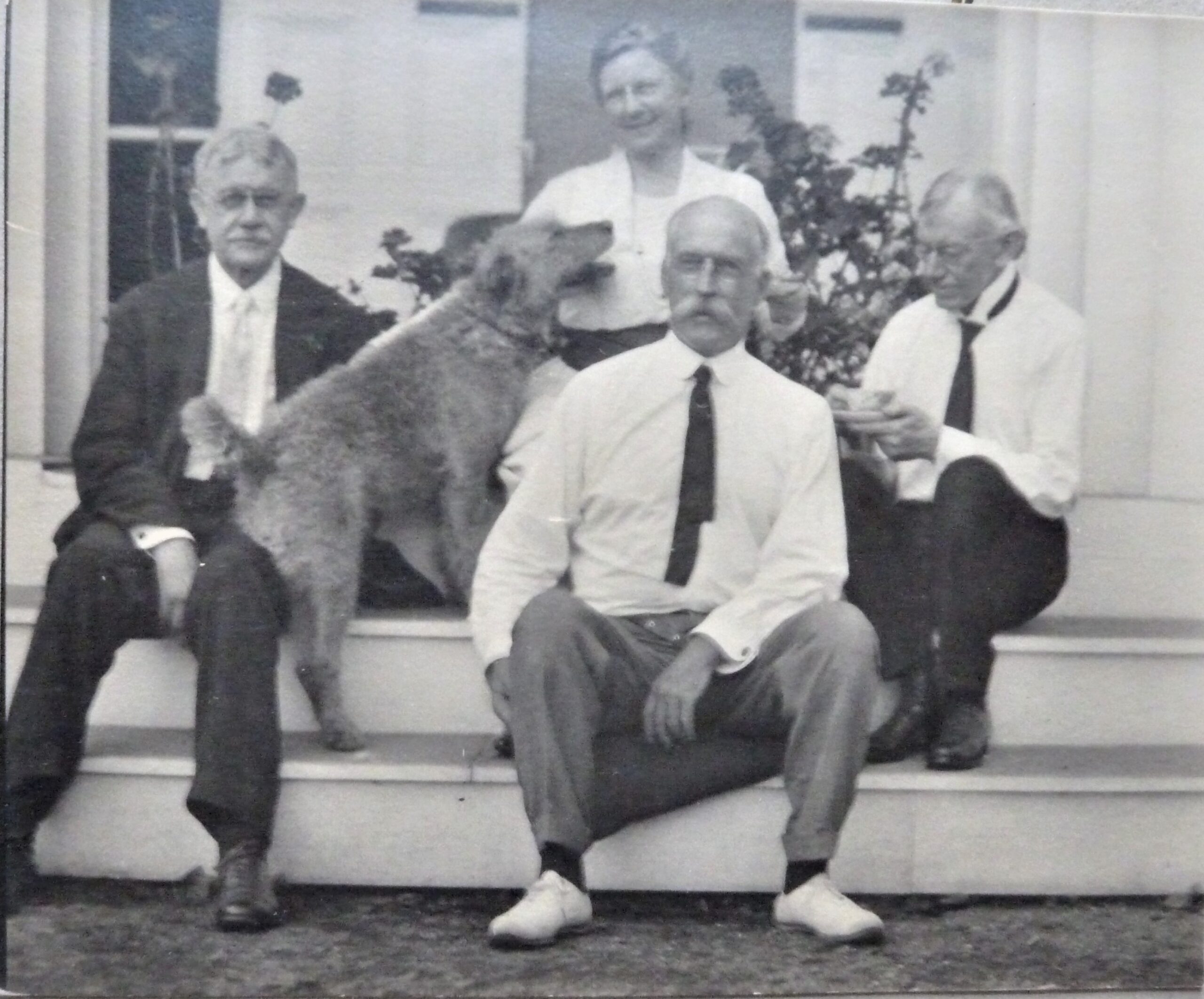
Letitia and Charles with Letitia’s cousins and Jerry the Airedale terrier, c. 1917.
Their son Charles J. became an ace pilot during the war and returned to law practice in his father’s firm. In early 1923, Charles J. married Katharine Legendre Keep, a war widow with a six-year-old son, Henry B. Keep Jr. After his early years in Chicago, Henry loved the open space at Andalusia and playing with neighborhood children. Later in life, Henry related the warm welcome he received from his new grandparents, but it was Charles Biddle with whom the closeness was most evident. Henry explained in an oral interview in the early 1970s, “I loved him. Didn’t understand Granny (Letitia) and I didn’t know what to call her, but for some innate reason I just loved Grandpa Biddle, who was just the kindest, nicest man, most understanding person.” Since Charles was retired by this time, he took Henry with him all around the grounds and in a canoe across the Delaware River. Henry particularly remembered that during these trips, Grandpa Biddle would treat him to hot dogs and chocolate, much to the dismay of Henry’s nurse, Diddy. Young Henry was devastated at Charles’s passing after so recently finding such a wonderful companion.
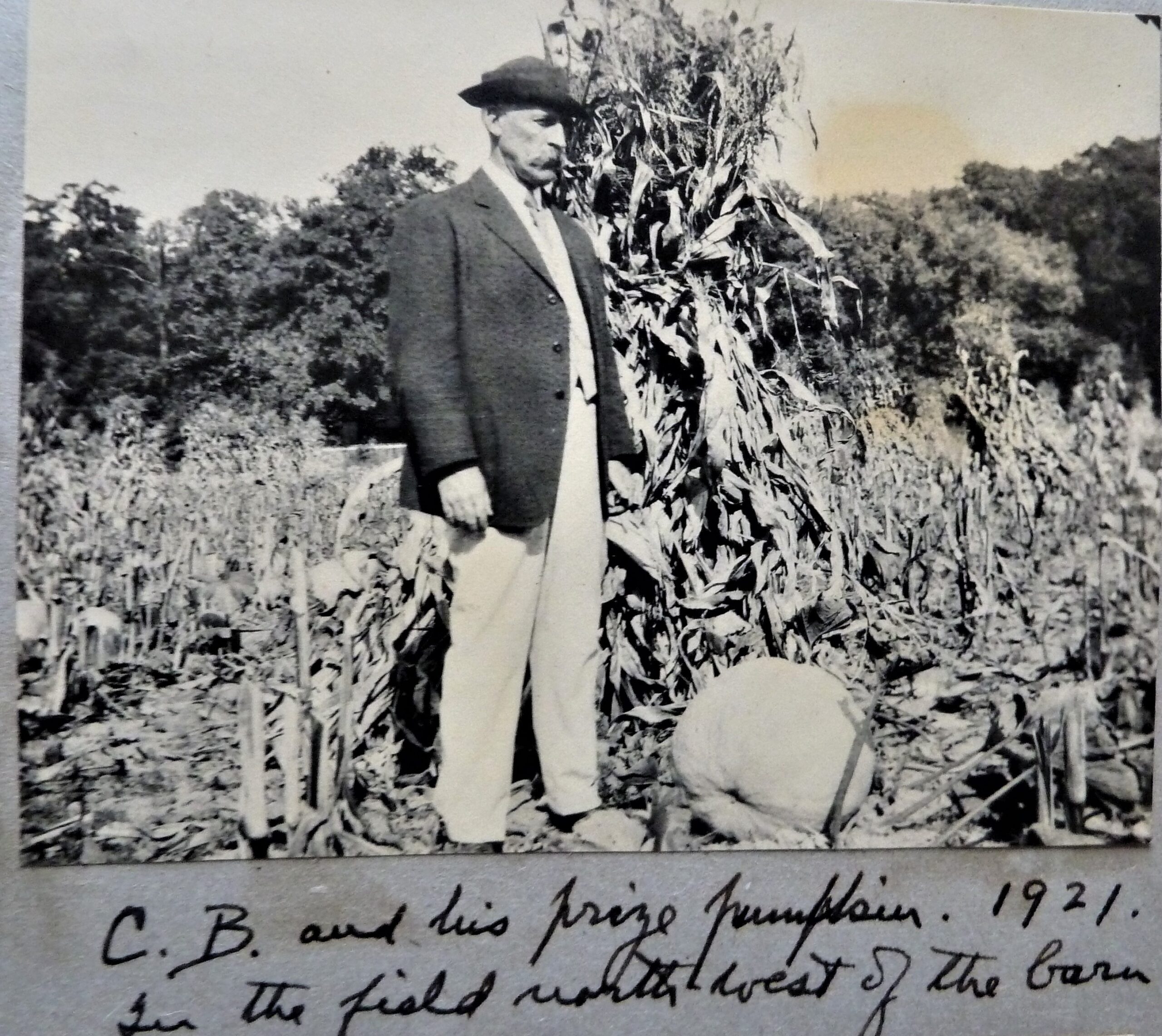
Charles Biddle at Andalusia, 1921.

Charles J. Biddle, Henry B. Keep Jr., and Katharine L. Biddle on Big House porch, c. 1924.
Not until August 19, 1923, several weeks after Charles’s death, did Letitia Biddle record any activity in her Garden Journal. She writes, “. . . I have done little in the garden since early July.” She continues that the “Japanese beetle depredation is terrific” listing damage: “Linden trees, cherries, roses, grape vine, hollyhocks and ampelopsis skeletonized.” Letitia returned to her garden where she gained some solace as she mourned the loss of her beloved husband.
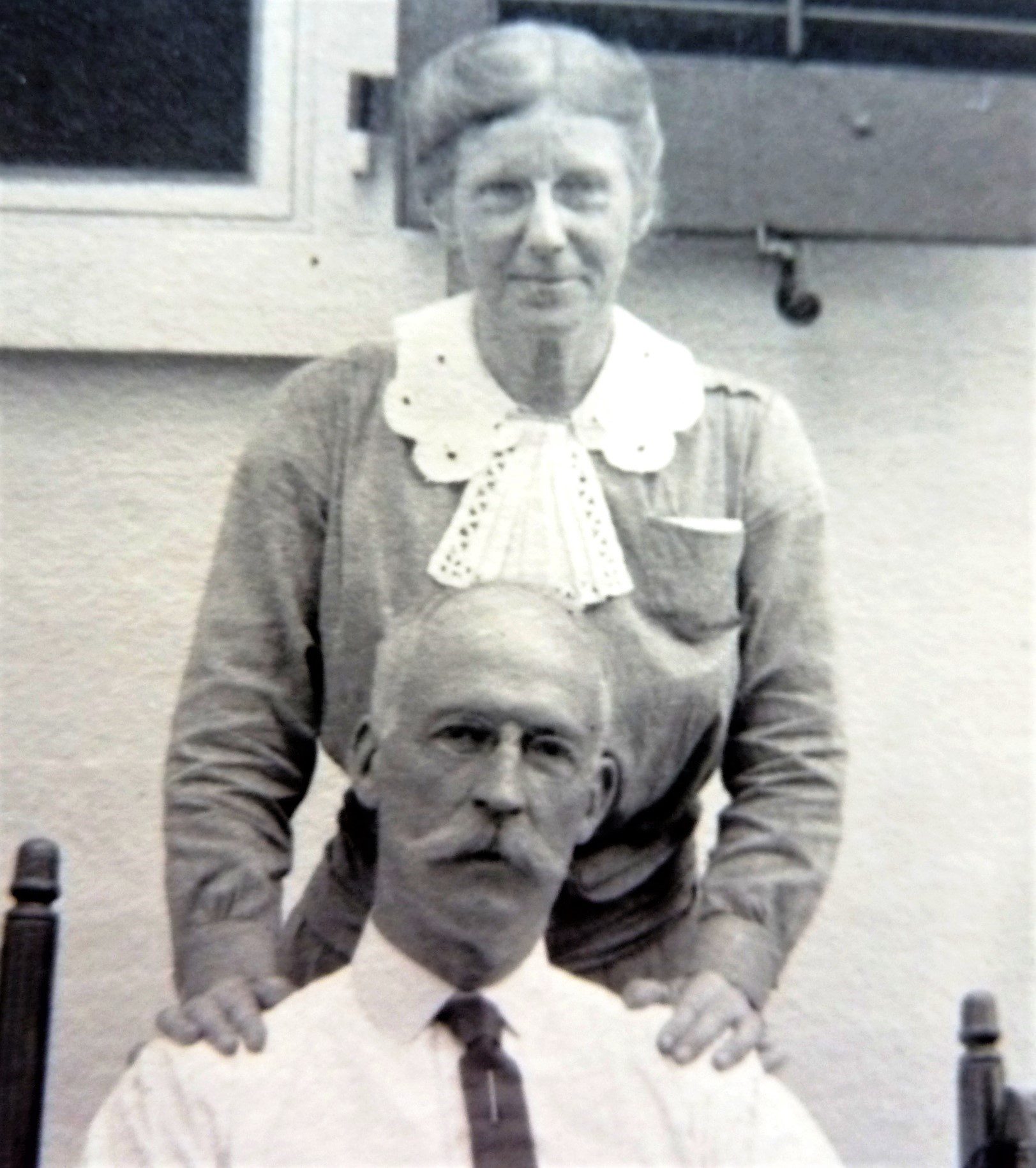
Letitia and Charles, c. 1920.
Written by: Connie S. Griffith Houchins
Photos from Andalusia Archives
Collections consulted: Andalusia photo albums; Letitia Glenn Biddle Garden Journal; Oral Interview transcripts with Henry B. Keep Jr., Mr. and Mrs. George Roberts, Charles and Katharine Biddle; miscellaneous newspapers including newspapers.com
© The Andalusia Foundation, 2023

